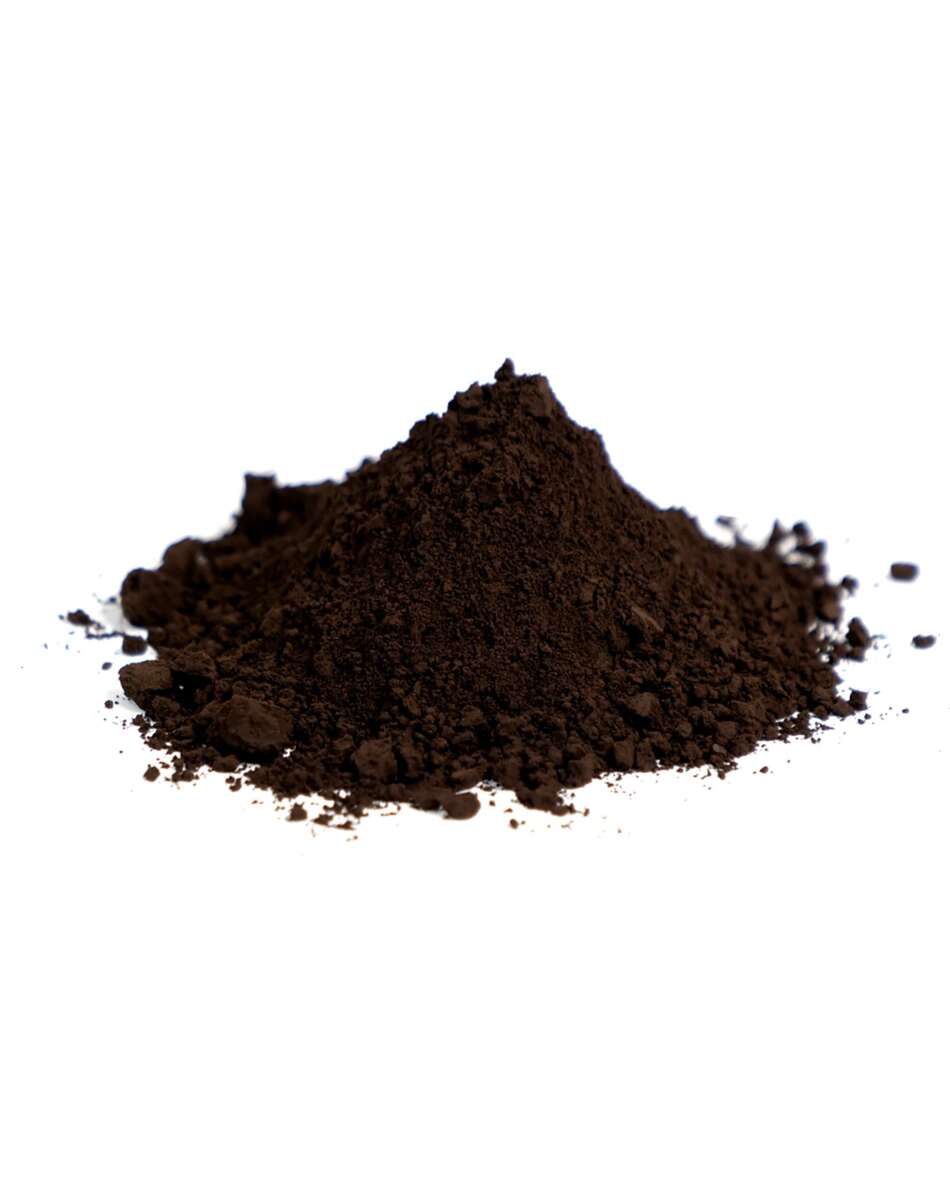Cassel Earth 1kg
Cassel Earth is a pigment of a deep semi-opaque brownish-black color, similar to the color used by Anthony van Dyke in his paintings. This Cassel earth is a blend of natural iron oxides and umber imported from Italy.
Cassel Earth is a pigment of a deep semi-transparent brown color, supposed to be the color used by Rubens and Anthony Van Dyke in their paintings. Rublev Colours Cassel Earth is imported from Germany.
| Pigment Names | |
| Common Names: | English: Cassel brown, Cassel earth, Cassel umber, Cologne brown, Cologne earth, Cologne umber, Cullen earth, Kassel earth, Rubens brown, Van Dyck brown, Van Dyke brown, Vandyke brown French: terre de Cassel, terre de Cologne German: Kasslerbraun, Kasseler Erde, Kölnische Erde, Van Dyck Braun Italian: terra di Cassel, terra di Colonia Spanish: tierra de Cassel, carmelita Van Dyck |
Origin and History
Cassel earth, also known as Vandyke brown and Cologne earth, is brown earth containing iron and manganese oxides and lignites, which are organic substances from peat or coal. It was first used in European painting in the 17th century and is still in use today. This color is found in the pictures of the old masters, among them Rubens, who used it mixed with gold ochre as a warm, transparent brown, which held up particularly well in resin varnish.
Source
A brown earthy substance found in peat and lignite beds and used as a pigment; originally found near Cassel, Germany. Cologne brown or Cologne earth is a similar substance originally found near Cologne, Germany. The brown earth has since been obtained from various localities each of which may differ slightly in color and composition. To add to this confusion some pigments labeled Cassel earth or Vandyke brown are bituminous earth while others are artificial pigments made from carbon black and iron oxide mixtures. When natural Cassel earth is ignited, the pigment leaves a soft gray residue. It is not soluble in petroleum solvents like bitumen.
Rublev Colours Cassel Earth is a natural mineral imported from Germany composed of pyrolusite (a manganese oxide mineral), goethite (an iron hydroxide mineral), and lignite. Lignite, also known as brown coal, is a brownish-black, heterogeneous mixture of compounds that have high inherent moisture and high ash content compared with bituminous coal.
Permanence and Compatibility
The minerals composing Cassel earth, pyrolusite, and goethite, are both considered to be among the most permanent pigments on the artist's palette. However, the lignite portion of Cassel earth has limited lightfastness, chemical resistance, and heat stability. Cassel earth (the lignite portion) is partially soluble in oil and may exhibit a slight tendency to turn gray (most apparent when mixed with whites). When used in an oil paint layer coated with spirit varnish or mixed with resin varnish it is more permanent than when used in oil alone. It is sensitive to alkalis and becomes a cold gray in fresco. It can be used in oil, egg tempera, and watercolor but should not be used in fresco and casein tempera painting techniques. There are no known incompatible pigments.
Oil Absorption and Grinding
Cassel earth absorbs a moderate to a large amount of oil, is a medium to slow dryer in oil paint, and forms a good film. The oil absorption ratio is 60–70 parts by weight of linseed oil to 100 parts by weight of pigment. If the measurement were grams, Cassel earth would require 60–70 grams of linseed oil to grind 100 grams of pigment to form a stiff paste. The pigment absorbs the oil with difficulty, so it is best to let the oil and pigment remain in contact overnight before grinding with a muller. The mixture before grinding may be quite thin, but after grinding, it will stiffen to a jelly-like consistency, which is the nearest state to a paste possible with this pigment. The finished paint may subsequently soften and become more fluid. Using boiled oils does not remedy this situation. From 25 to 50% on the weight of pigment of terra alba may be added to improve the physical characteristics of Cassel earth.
Colour Index
The Colour Index (Third Edition 1997) lists Van Dyke Brown or Cassel Earth as Natural Brown 8 (NBr 8) and lists Pigment Brown 8 (PBr 8) as manganese hydroxide and oxides (the natural form usually also contains iron oxides and clays). This pigment primarily consists of iron oxide with smaller amounts of manganese oxide and lignite. This makes classifying this natural pigment difficult which seems to be a common point of confusion among pigment and paint manufacturers. We have provided the three Colour Index Generic Names (CIGN) for the purpose of assisting its identification since many natural pigments are not pure compounds but rather mixtures.
Toxicity
Cassel earth is not considered toxic, however, one of its components, manganese oxide, is moderately toxic and care should be used in handling the dry powder pigment so as not to inhale the dust.
| Pigment Information | |
| Color: | Brown Black |
| Colour Index: | Pigment Black 11 (PBk 11) (77489) Pigment Brown 8 (PBr 8) Natural Brown 8 (NBr 8) |
| Chemical Name: | Iron hydroxide and manganese oxide (partial components) and lignite |
| Chemical Formula: | FeOOH, MnO2 (primary components) |
| ASTM Lightfastness Rating | |
| Acrylic: | Not Listed |
| Oil: | Not Listed |
| Watercolor: | Not Listed |
| Properties | |
| Density: | 1.66 |
| Hardness: | – |
| Refractive Index: | 1.62–1.69 |
| Oil Absorption: | 60-70 g linseed oil/100 g pigment |
| SKU | 481-121K |
|---|---|
| Brand | Rublev Colours |
| Vendor | Natural Pigments |
| Processing Time | Usually ships the next business day. |
| Size | 1 kg |
| Color | Black |



